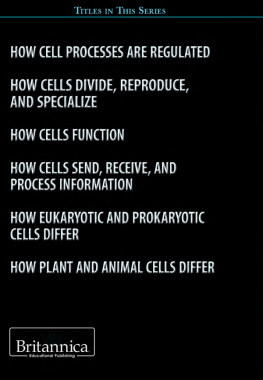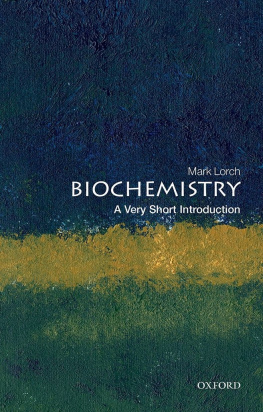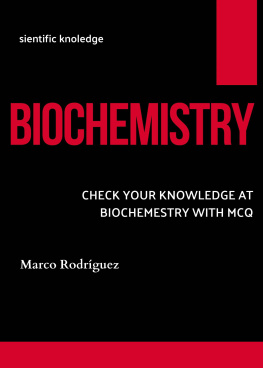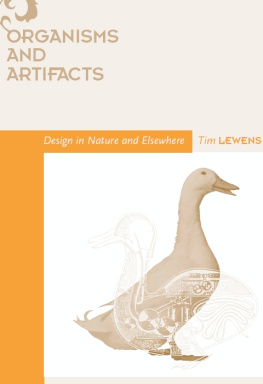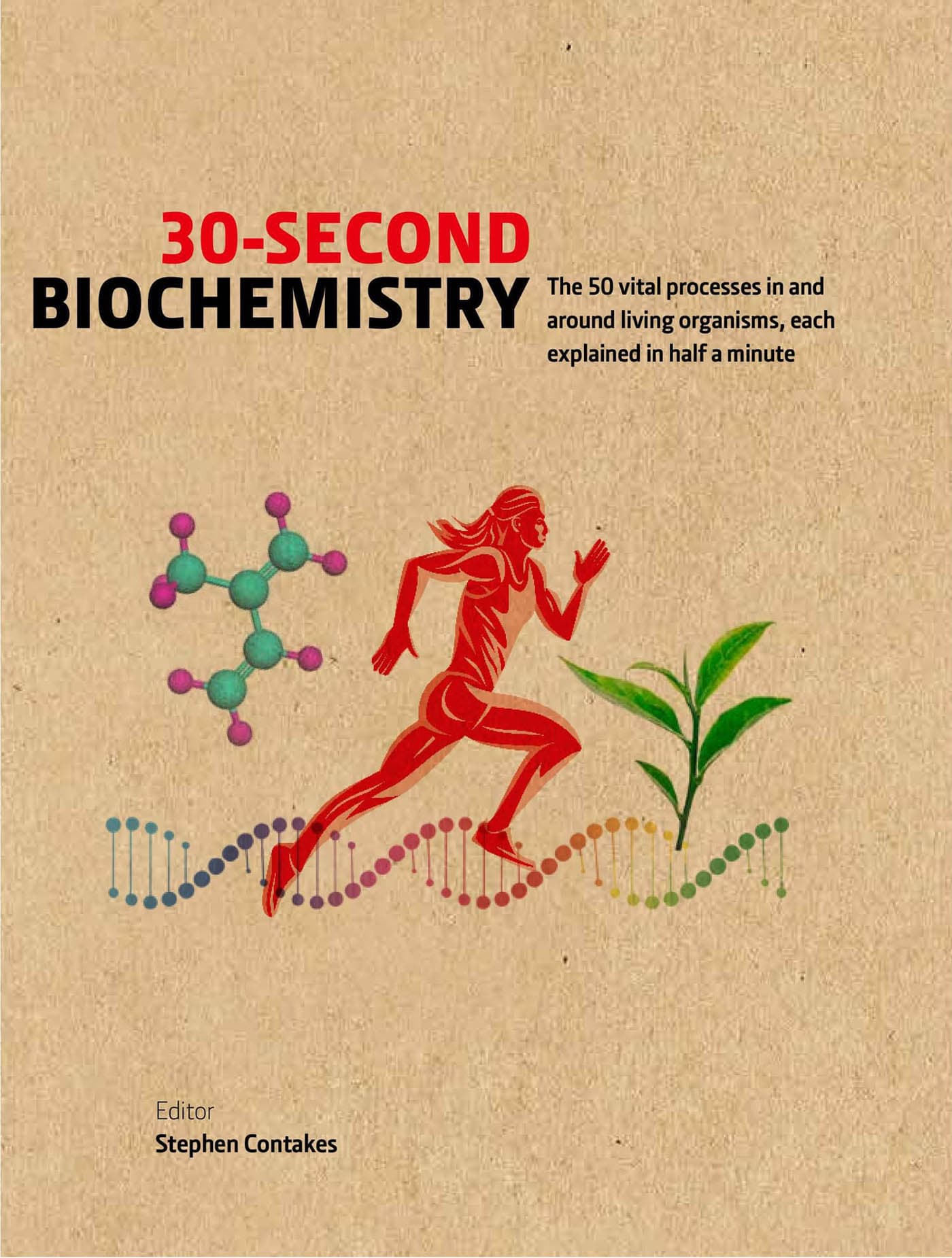Contents
Page List
Guide
Cover

30-SECOND
BIOCHEMISTRY
The 50 vital processes in and around living organisms, each explained in half a minute
Editor
Stephen Contakes
Contributors
Stephen Contakes
Steve Julio
Kristi Lazar Cantrell
Ben McFarland
Vassilis Mougios
Anatoli Petridou
Andrew K. Udit
Illustrator
Steve Rawlings
CONTENTS
INTRODUCTION
Stephen Contakes
Biochemistry deals with life, a concept difficult to pin down but which may be roughly understood as comprising parts of the natural world that are distinct from their surroundings, can take in and use energy to sustain themselves, and reproduce. It examines life in terms of atoms and collections of atoms called molecules. Over the past two centuries the merger of chemistry and biology in biochemistry has yielded an increasingly detailed understanding of how living things work. This has especially been the case from the twentieth century onwards as chemists and physicists have developed powerful tools for probing the composition and structure of matter at the molecular level. Through these it is now possible to separate living things into their molecular components with incredible resolution, determine their three-dimensional structures, follow the chemical reactions taking place in living things and determine how biomolecules perform the functions they do.
The power of a molecular perspective in the life sciences was aptly summarized by Francis Crick: Almost all aspects of life are engineered at the molecular level, and without understanding molecules we can only have a very sketchy understanding of life itself. The aim of this book it to develop an understanding of life by describing molecules and how they work together in living systems. It does so using brief digestible introductions to 50 important ideas in biochemistry.
As with other titles in the series, this book does not attempt to give a systematic in-depth survey of biochemistry. Some of the entries in which the important ideas are presented explain key concepts or foundational principles that govern the behaviour of biological molecules. Others describe how molecules work individually or as part of larger systems to perform biological functions. Interspersed throughout are vignettes that present biochemistry as a human enterprise. Together these are intended to give you a sense for how life works at the molecular level and to help you see that there are always opportunities for bright and enterprising scientists to further our understanding of biochemistry.

How this book works
Each entry is broken into several parts. The 30-second structure and 3-second nucleus summarize the main idea. In particular, the 30-second structure gives the body of that explanation while the 3-second nucleus summarizes it in a sentence or two. In contrast, the 3-second biographies and 3-minute system explain how the main idea fits in a wider context. The 3-second biographies introduce scientists who contributed to the ideas discovery or development. The 3-minute system expands on the main idea by explaining how it works in another context or how it applies in interesting situations.
Although each entry is capable of being read individually, it helps to begin with foundational principles before applying them to increasingly complex systems. The book begins by considering biochemistrys context, specifically its scope and the key physical principles that govern how molecules act in living systems. Next, the building blocks that make up life are described, followed by a more detailed look at the protein machinery that does much of the work of the cell. Then follow three sections that explore how collections of biomolecules work together to harvest energy, make the molecules of life and help complex multicellular organisms such as us stay alive. Finally, the way in which these processes can be disrupted for good or harm is explored in a section dealing with sickness and health. Fittingly, the final entry explores how biochemistry functions both as a way of making sense of life and transforming it, specifically through inexpensive and easy-to-use technologies for editing the information-bearing DNA molecules that shape the character of living things.

BIOCHEMISTRYS CONTEXT
GLOSSARY
adenosine triphosphate (ATP)A nucleotide that serves as an energy currency, being formed in processes that release energy and broken down in processes that use energy.
adipocytesSpecialized cells that store triglycerides or fats in higher organisms.
biomoleculeA molecule distinctively found in living systems.
bonds (chemical)Forces linking two atoms together in a molecule or solid.
bufferA mixture of an acid and base that maintains a constant acidity.
electrolytesPositively and negatively charged atoms or groupings of atoms, called ions, dissolved in water.
electronA negatively charged part of an atom. Attractions between electrons and positive nuclei are responsible for the forces between atoms.
endoplasmic reticulumAn organelle consisting of a network of membranes where proteins and some lipids are made.
entropyA measure of the thermal energy in a system that is not able to do work. Since this energy is associated with uncoordinated motions, entropy is associated with the freedom a molecular system has to rearrange, sometimes loosely described as disorder.
eukaryotic cellsCells that contain smaller sacs, called organelles, which perform specialized functions.
glycolysisThe breakdown of the carbohydrate glucose.
Golgi apparatusAn organelle sometimes referred to as the cells post office; it packages proteins for transport to other parts of the cell.
hydrophobicSomething that appears to repel water since it doesnt stick tightly to it.
ionAn atom or grouping of atoms possessing a positive or negative charge.
membraneA thin boundary (two lipids thick with a greasy inside and water-loving faces) that surrounds biological compartments such as cells and organelles.


